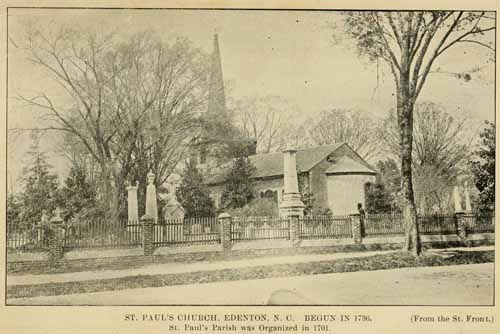1673–1758

John Alston, early settler, is remembered more as the progenitor of a family whose members have played significant political and social roles in North Carolina than as an important figure in his own right. He was born in Bedfordshire, England, where his family in 1640 had acquired the castle at Odell, after having been seated at Saxham Hall in Norfolk since the Middle Ages. The founder of the North Carolina Alstons was the third in succession to bear the name John; the founder of the South Carolina family, another John Alston, was his first cousin. John of North Carolina was the son of Ann, daughter of the celebrated John Wallis, Savilian professor of geometry and archivist of Oxford University. John Alston was baptized on 5 Dec. 1673 in the parish church at Felmersham, a village that lies almost in sight of Odell and Pavenham, the other two Bedford villages closely associated with the Alstons.
Alston may have emigrated to the West Indies or possibly to South Carolina before moving to Virginia, whence he entered North Carolina; he was thirty-eight years old when his name first appeared in the Albemarle Book of Warrants and Surveys in 1711, at which time he was named as grantee of land on the northwest side of Bennett's Creek in that part of Chowan (now Gates) County that lay in the territory in dispute between Virginia and North Carolina. Unlike other settlers in this area, Alston does not appear in the fragmentary records of Nansemond, the adjacent Virginia county. William Byrd, in his account of surveying the dividing line between the two colonies in 1728, mentioned dining with Major Alston at the home of Thomas Speight in Perquimans on 19 Mar. 1728. On 24 Mar. he wrote: "This being Sunday the People flock't from all parts partly out of Curiosity, & partly out of Devotion. Among the Female part of our Congregation, there was not much Beauty, the most fell to Majr. Alston's daughter, who is said to be no niggard of it. . . . Major Alston & Captain Baker dined with us. . . . "
From 1711 throughout the remaining forty-seven years of his life, John Alston continued to acquire and to assist his children to acquire land in the expanding areas of Bertie, Edgecombe, Granville, and Orange. Like his sons, he seems consciously to have determined to establish his descendants as landholders. In much the same pattern, Alston held public positions comparable to those his family had held at home; in 1720 he became a justice of the peace for Chowan, continuing in that post until he was commissioned assistant justice of the court of oyer and terminer in 1724, in which office he served for five years. In 1725 he became collector of revenue for the colony. In 1738 Alston was elected to the vestry of St. Paul's Parish, Edenton; he continued as a vestryman until he was named sheriff in Chowan in 1746 at the age of seventy-three. In the colonial militia, Alston is recorded as captain before 1724; in 1725 he became a major; and in 1729 he was designated colonel.
About 1700, John Alston was married to Mary, daughter of John Clark of Pasquotank and cousin of Chief Justice John Palin. His wife's Quaker ancestry may account for the biblical names found among the early North Carolina Alstons, names not so prevalent among their South Carolina kinsmen. The list of John and Mary Clark Alston's children and their places of residence illustrates how the children of settlers in the Albemarle quickly expanded their land holdings and moved to developing areas inland: Joseph John (ca. 1702–81) of Edgecombe (later Halifax) County; Mary, who married first Henry Guston of Bertie County and second William Seward of Isle of Wight County, Va.; Solomon (ca. 1707–84) of Bute (later Warren) County; Sarah (b. ca. 1709), who married Thomas Kearney of Edgecombe (later Halifax) County; Elizabeth (b. ca. 1711) married to Samuel Williams of Edgecombe County; William (ca. 1714–ca. 1743) of Edgecombe County; Charity (b. ca. 1718), who married first Robert Hilliard and second John Dawson, both of Northampton County; Philip (ca. 1723–83) of Bute (later Warren) County; James (d. 1761) of Orange County; and Martha, married to Lemuel Wilson of Norfolk County, Va.
Unlike many of the early colonists, John Alston lived a long life, surviving two of his children. On 17 Sept. 1754, at the age of eighty-one, he began writing his will; he finished and dated it 20 Feb. 1755. Three years later he died at his residence on Bennet's Creek; his will was probated in Chowan County.